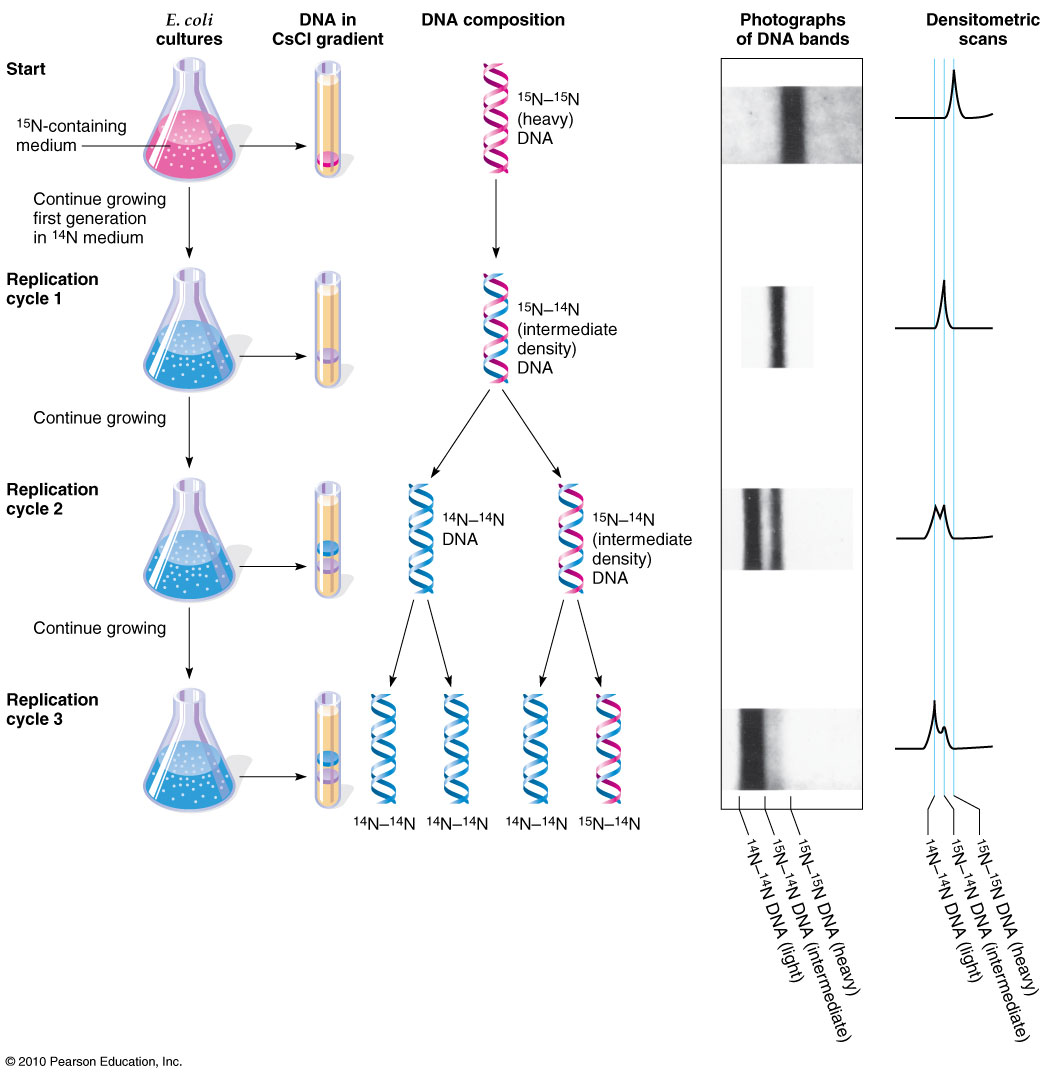
The
Meselson - Stahl experiment: Proof of Semi-Conservative
Replication
Meselson & Stahl first grew bacteria for several generations in a medium containing only 15N ("heavy" nitrogen). When examined in an analytical centrifuge, DNA isolated from these bacteria produced a single "heavy" band. Meselson & Stahl then transferred a portion of the culture to a new medium that contained only 14N ("light" nitrogen). When DNA was isolated from these bacteria after one generation, they observed a single band that was "lighter" than the one obtained before; the "heavy" band was not observed in these bacteria. When DNA was isolated from the same culture after two generations, they observed two distinct bands of equal intensity, one with the same weight as seen in the previous experiment, and a new one still "lighter." When DNA was isolated from the same culture after three generations, this lightest band became the predominant one, and the middle band faded.
Meselson & Stahl reasoned that these experiments showed that DNA replication was semi-conservative: the DNA strands separate and each makes a copy of itself, so that each daughter molecule comprises one "old" and one "new" strand. Bacteria grown in "heavy" Nitrogen have been labeled on both strands entirely with "heavy" Nitrogen. After one generation in "light" Nitrogen, all of the DNA molecules comprise one "old heavy" and one "new light" strand, and have the same "heavy / light" molecular weight, which is less than that of "heavy / heavy" molecules. After two generations in "light" medium, the "heavy" and "light" strands separate, and both replicate with "light" nitrogen. Half therefore become "light / light", and half become "heavy / light" as in the previous experiment. In each successive generation, the proportion of “heavy” strands is reduced by half, and the “heavy / light” band gradually fades.
Homework:
1) Do you expect
the lightest band strand to become still lighter with
further generations of replication? Explain.
2) Suppose DNA replication
were “conservative”: the parent strands separate,
each makes a copy of itself, and the two new daughter
strands come together as a new molecule and the old
parent strands rejoin. Under those conditions, predict
& draw the results of the Meselson – Stahl
experiment.